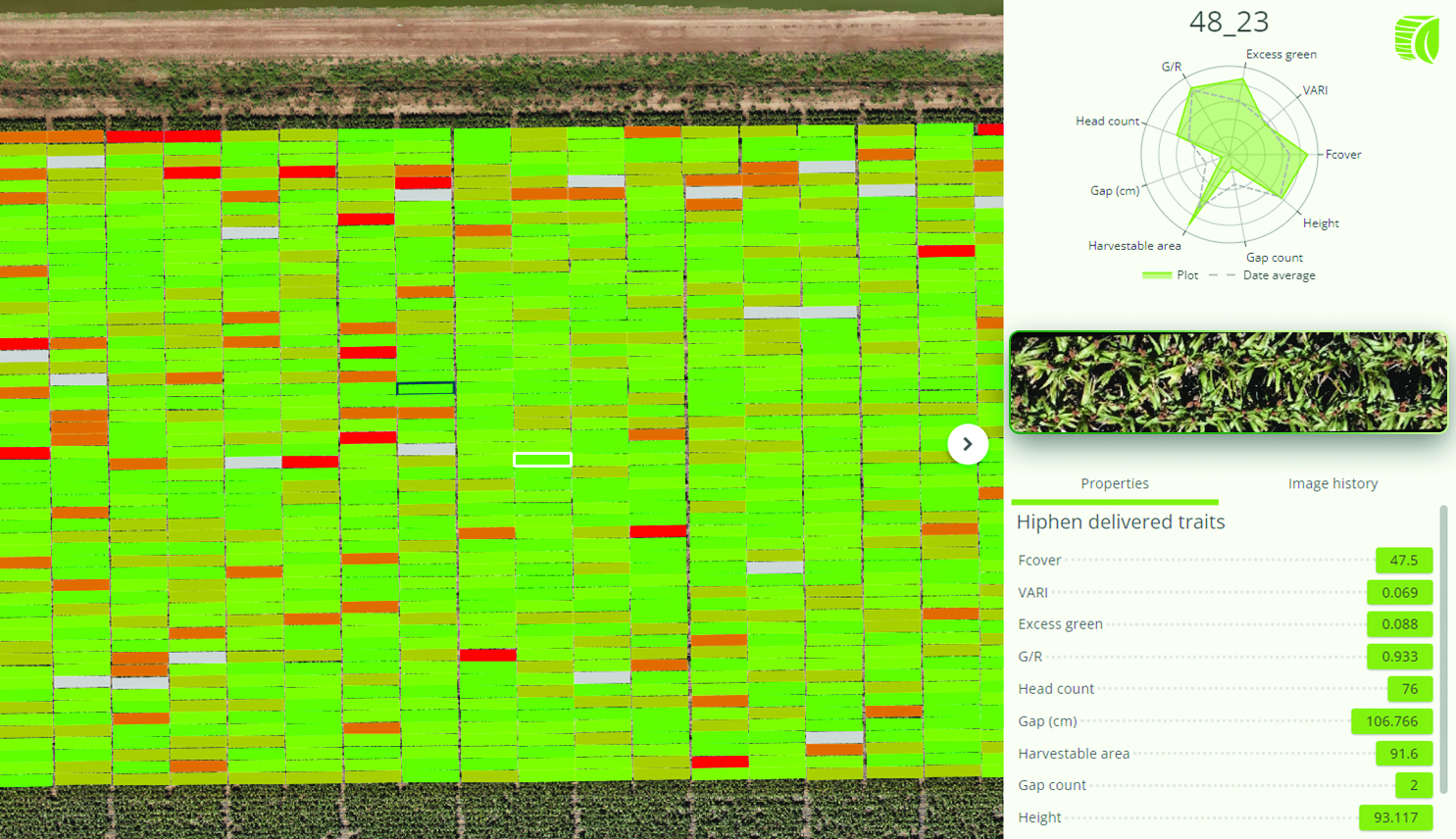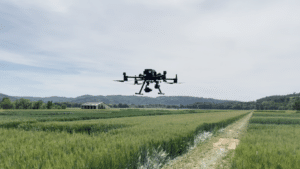Trait extraction from drone imagery is a transformative tool for crop breeders, offering unprecedented insights into crop performance and health. This technology not only expedites the breeding process but also equips breeders with the knowledge needed to develop crops that can withstand the challenges of 21stcentury agriculture.
Until recently, assessing plant traits involved time-consuming and labor-intensive fieldwork. Drone imagery, however, accelerates this process by providing high-resolution data on a large scale. From plant height and canopy cover to chlorophyll content and stress indicators, drones can capture a wealth of information that is instrumental to understanding a crop’s performance.
Plant Trait Extraction: A Game-Changer for Crop Breeders
In 1973, John Rouse first applied a concept of using a reflectance/absorption ratio of two spectral bands (red and near-infrared) to differentiate between different ecosystems from satellite imagery. That was the birth of Normalized Difference Vegetation Index (NDVI). Over the years, plant scientists have devised many different ratios of absorbed and reflected light and combined them into an alphabet soup (MCARI, NDRE, NRI, LAI, MSAVI etc.) of vegetative indices to measure phenotypic and phenological characteristics of plants.
In the early aughts, image stitching process began to evolve and when applied to drone image acquisition, allowed for the building of 3D recreations of fields. This enables the extraction of architectural traits like plant height and biovolume from drone image sets. The orthographic projection from this process also facilitated the georeferencing of plot maps, thus opening the door for extraction of traits from the small plot work ubiquitous with crop researchers and breeders.
Recent development in machine learning allows for classification and quantification of features in drone images. This development led to traits like stand counts, ground coverage, and the counting of organs like wheat heads and sorghum panicles.
Drones can now be equipped with thermal sensors which can detect early signals of plant disease. LiDAR can also be attached as payloads on drones, increasing the accuracy and resolution of 3-D traits.
For many of the key crops, these traits are in production mode via leading imaging solutions organizations like Hiphen. As these traits become more routine, the data generated is being analyzed through time series or algorithms that combine different traits to derive key performance and management markers such as maturity, flowering date and even yield predictions.
While plant trait extraction from drone imagery holds immense promise, challenges remain. Standardizing data collection protocols, addressing privacy concerns, and refining data analysis algorithms are ongoing endeavors. Additionally, integrating this technology into the broader agricultural landscape requires collaboration among researchers, breeders, and technology developers.
Data Driven Decision Making
The sheer volume of data generated by drone imagery necessitates sophisticated data analysis techniques. Artificial intelligence and machine learning algorithms come into play, processing large datasets to extract meaningful insights. This data driven approach empowers crop breeders to make informed decisions, identify genetic markers associated with desirable traits, and streamline the selection of promising plant varieties. In the next installment of this column, Hiphen CEO Alexis Comar will talk about making sense of all of this new data that has become available.











